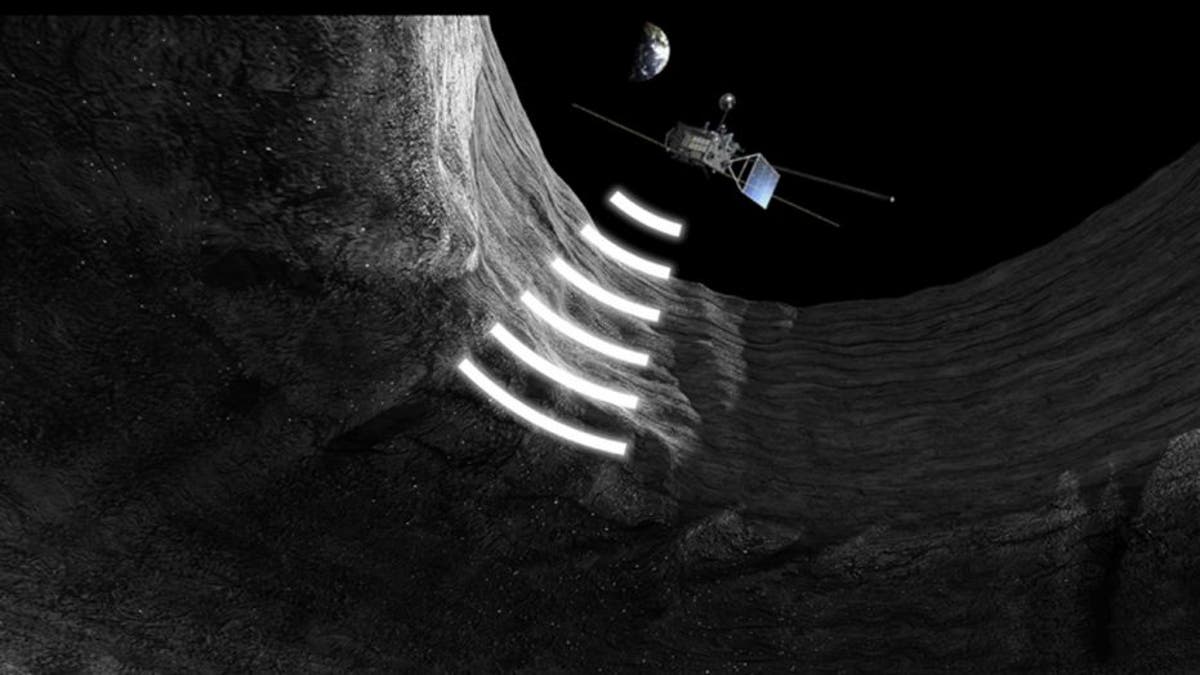
Artists' rendering of SELENE (Kaguya) sounding lava tubes in orbit. (Credit: JAXA/SELENE/Crescent/Akihiro Ikeshita for Kaguya image)
We may be able to easily access substantial quantities of water on the moon, thanks to ancient lava tubes near the lunar north pole. That’s the conclusion of the SETI Institute, after analyzing new data from NASA’s Lunar Reconnaissance Orbiter (LRO). Small openings on the surface could be “skylights” leading to huge subterranean caves formed hundreds of millions of years ago.
Pascal Lee of SETI presented the findings at the Ames Research Center in California. “The highest resolution images available for Philolaus Crater do not allow the pits to be identified as lava tube skylights with 100 percent certainty, but we are looking at good candidates considering simultaneously their size, shape, lighting conditions and geologic setting,” he said.
The openings to the pits are as large as 100 feet across, leading to permanently shadowed caverns that consist of long winding channels formed by rivers of flowing lava.
SETI
More From Digital Trends
Extracting ice from the lunar soil on the surface would be an arduous task, and so having access to underground glaciers would make the process of obtaining water much easier. Although it’s not yet known that ice is present in the lava tubes, it could be in massive quantities, similar to findings in cold lava tubes on Earth. In addition, solar power could be used for such an endeavor, as the skylights provide relatively easy access to the lunar surface.
This area might even be a good location for a long-term lunar base, according to Science Alert. Not only would exploration of the subterranean caves provide invaluable insight into how the moon was formed, it could pave the way for further lunar missions and even expeditions to Mars.
“Exploring lava tubes on the Moon will also prepare us for the exploration of lava tubes on Mars,” Lee explained. “There, we will face the prospect of expanding our search for life into the deeper underground of Mars where we might find environments that are warmer, wetter, and more sheltered than at the surface.”
These are not the first caves of this nature found on the moon — more than 200 have been discovered by scientists, with many leading to underground lava tubes. The polar location is what has researchers intrigued, however, as water is known to be present in the permanently shadowed areas at the lunar poles.
The ice miners working on the lunar surface would also have a phenomenal view. “The Apollo landing sites were all near the Moon’s equator, such that the Earth was almost directly overhead for the astronauts,” Lee said. “But from the Philolaus skylights, Earth would loom just over the crater’s mountainous rim, near the horizon to the southeast.”